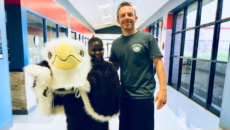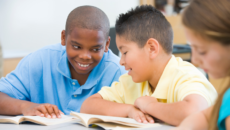Perhaps the most dreaded of all school assignments, for families touched by adoption, is the family tree project for kids. Parents are afraid their children will be embarrassed about their adoptive status or anxious about completing the assignment.
But, for the most part, children take this in stride. Some choose to include only their current family in their family tree, while others create trees that show adoptive, birth, and foster families, all in one happy picture.
As our children define their family, they will think about adoption and have questions about their birth family. For our families, the family tree is a natural opportunity to talk again about adoption. When parents are open to answering questions, and provide options for completing the assignment in a way that makes the child comfortable (see “Reading List”), the project can be a success.
A Learning Experience
When presented with thought and care, the family tree project can be wonderful. For teachers, the assignment offers opportunities to teach the meaning of family; to get the class thinking about what constitutes family; and to show the family diversity in our society—multiracial families, gay and lesbian parents, foster families, children raised by grandparents and other kin, non-related households, step- and blended families, as well as adoptive families.
For adoptive families, the family tree can start a dialogue between parents and child. As your child begins to grasp the implications of having a first family, the assignment triggers new questions about adoption and birth family. As you work together on the project, ask your child whether she has been wondering about her birth family, and whether you can answer her questions.
Growing Needs
Children’s reactions to the family tree assignment will vary by age. Here’s what to expect:
At age 6, most adopted children view adoption as a sunny event. Their trees show one big, happy family, perhaps including birth, foster, and adoptive parents and siblings. Follow your child’s lead in this depiction, and, if her artwork is posted in the classroom, help her prepare to answer questions that will surely come: “How come you have five sisters and two brothers in your picture? Don’t you have only one baby sister?”
At age 7, kids are easily embarrassed. They like to fit in, and they dread being put on the spot. They know that adoption is not a universal experience, and they will probably want only the adoptive family on their tree. Have a private, in-depth conversation in the safety of home.
At age 8, children start to make connections between past, present, and future. They like a realistic-looking family tree, one which captures their own history. But they can’t distinguish between family and public information, so kids this age need help. Clarify your child’s adoption information, and discuss answers to intrusive questions. Let your child know she can decide which information to give or not give.


